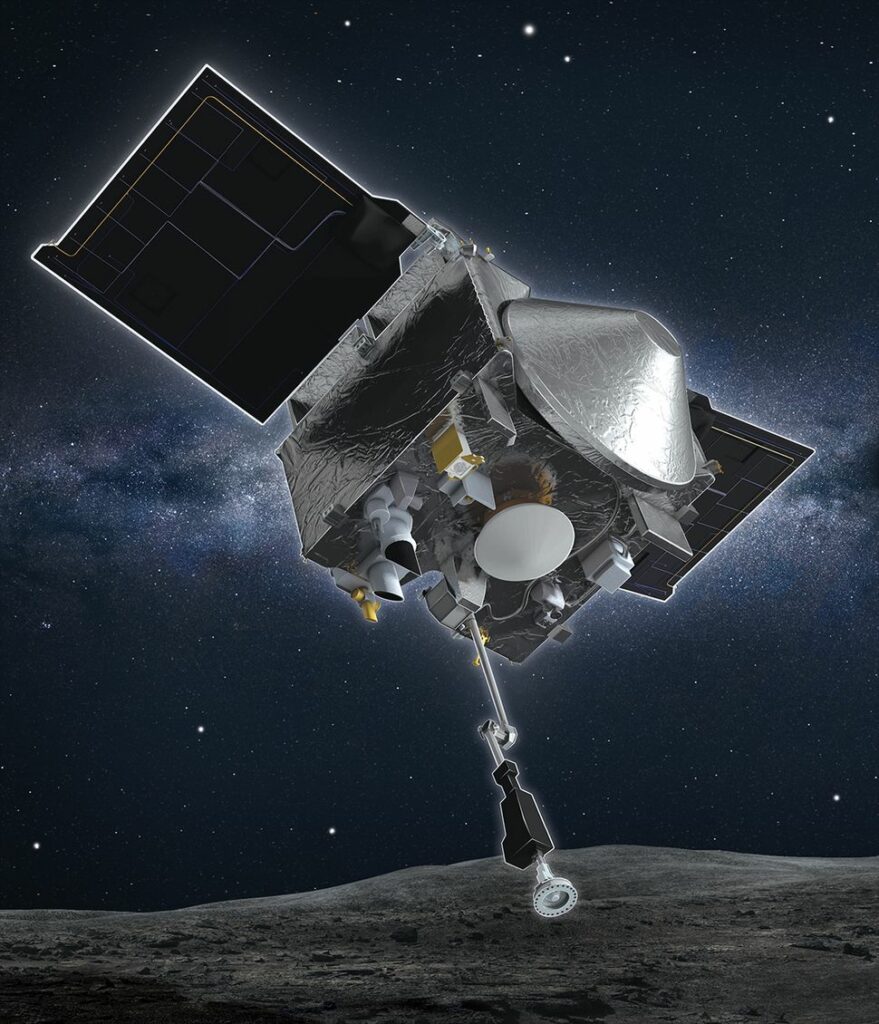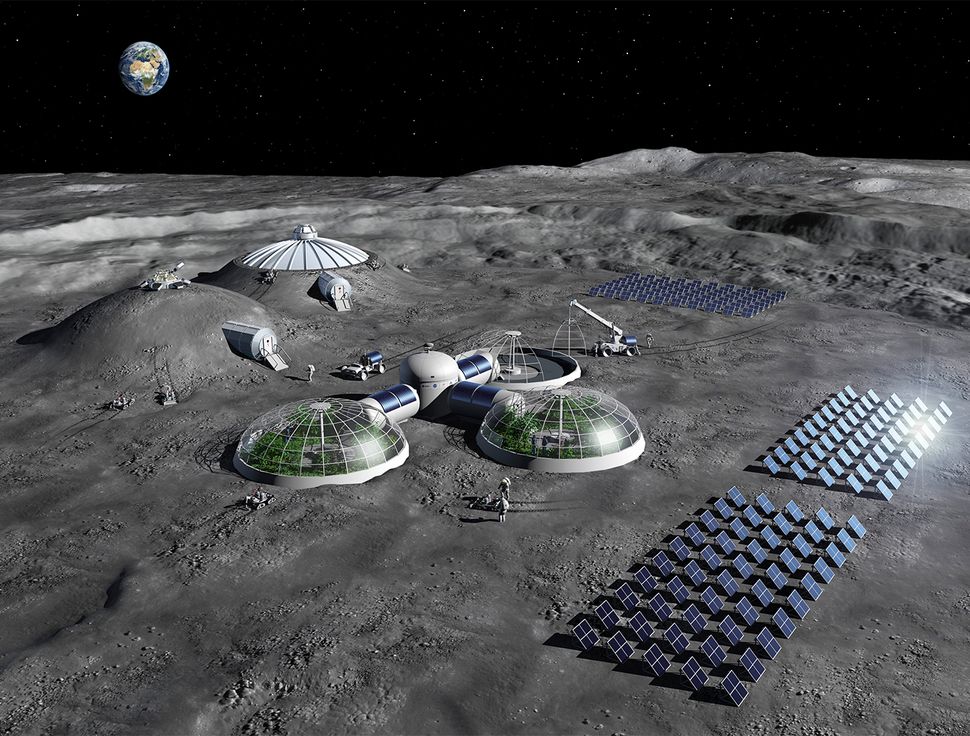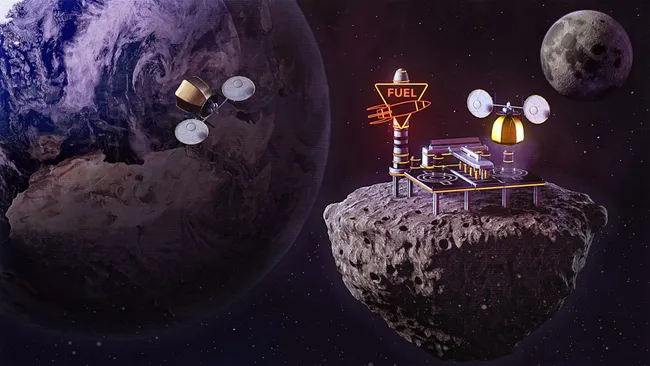Unearthed Potential: Could Unidentified ‘Minimoons’ Orbiting Earth Aid in Our Interplanetary Expansion?
Due to their proximity to Earth, minimoons are prime candidates for exploration. Now, some scientists want to use these tiny satellites to push humanity further into the cosmos.
In 2006, astronomers from the NASA-supported Catalina Sky Survey in Arizona made an intriguing discovery – a unique object floating among the multitude of human-made satellites orbiting Earth. Upon further investigation, it was revealed that this object was not just another piece of space debris. Instead, it was a natural satellite that had been temporarily pulled into an orbit alongside Earth, akin to the moon.
This “minimoon,” known as 2006 RH120, was only a few meters in diameter. Distinct from the actual moon, this celestial body was a transient companion to Earth, circling the planet for just a year before being expelled from its orbit. Over a decade later, scientists at the Catalina Sky Survey identified another minimoon (2020 CD3) – approximately the size of a small car – moving through Earth’s orbit, before being ejected from the Earth-moon system’s gravitational pull in March 2020.
Due to their close proximity to Earth, these minimoons have attracted significant scientific interest. Recently, some experts have viewed minimoons and other near-Earth asteroids for a different purpose: as potential stepping stones in our exploration of the universe.
“We have not yet evolved into an interplanetary species,” remarked Richard Binzel, a professor of planetary sciences at the Massachusetts Institute of Technology, in an interview with Live Science. Minimoons could serve as significant milestones “to strive for as we learn how humans can function in interplanetary space, and ultimately reach Mars.”
Stepping stones

In September 2016, NASA initiated the unmanned OSIRIS-REx spacecraft mission with the objective of procuring a sample from the potentially dangerous asteroid Bennu, which poses a 1-in-2,700 chance of colliding with Earth in 2182. After a span of seven years, OSIRIS-REx successfully returned to Earth carrying a small fragment of the 4.5 billion-year-old asteroid.
The triumph of the OSIRIS-REx mission has served as a source of inspiration for scientists who are now devising plans for the subsequent stages of near-Earth exploration. One concept being considered is the utilization of nearby asteroids as intermediate points for missions to Mars, as suggested by Binzel.
While the retrieval of Bennu marked a positive step forward, Binzel believes that there may be a more suitable target for testing our technological capabilities in expanding further into the vastness of space. Bennu is approximately 186,000 miles (300,000 km) away from Earth at its closest point and only intersects the planet’s orbit around the sun every few years. Consequently, the mission took seven years to complete and incurred an estimated cost of $1.16 billion.
On the other hand, according to Binzel, minimoons are among the most accessible asteroids from Earth. “To travel anywhere in space, one must alter their velocity,” Binzel explained. Minimoons are small celestial bodies with minimal gravitational pull, requiring a relatively low change in velocity, or delta-V, to reach them. This implies that it would require minimal propulsion to transport a spacecraft from low Earth orbit to rendezvous with a minimoons.
Due to these characteristics, minimoon missions would necessitate less fuel compared to journeys to other cosmic bodies. “It only takes a small amount of fuel to depart from the minimoons and return to Earth,” Binzel stated in an email to Live Science.
Research suggests that journeys to minimoons would take approximately 100 days for a round trip. (In contrast, our permanent moon is approximately a three-day journey away, but NASA’s Saturn V rocket required 203,400 gallons (770,000 liters) of kerosene fuel and 318,000 gallons (1.2 million liters) of liquid oxygen just to launch into space.
While the concept of minimoon missions shows promise, the main issue lies in their transient nature, making it challenging to plan and execute a mission before the natural satellite completes its short-lived journey around Earth.
“They are in tagalong orbits with the Earth, so they’re like a pet,” Binzel mentioned. “Temporary pets that you keep for a while and then they wander off.”
NASA and other space agencies can evaluate the effectiveness of their technologies in deep space, such as life support systems, engines, and propulsion systems, by conducting missions to minimoons and other near-Earth asteroids in their proximity, as stated by Paul Abell, chief scientist for small body exploration at NASA, to Live Science.
“Going to Mars is a significant leap,” he explained. “There are numerous prerequisites, so why not explore some of these near-Earth asteroids that lie between the Earth-moon system and Mars.”
These minimoon expeditions could also assist scientists in a different endeavor that is equally crucial for reaching Mars: water mining.
Water is essential not only for hydration but also for producing additional rocket fuel, typically liquid hydrogen. This fuel will be necessary to travel the vast distance to Mars, which is, on average, over 140 million miles (225 million km) away from Earth.
At present, spacecraft must transport all the water and fuel they require from Earth. The substantial weight of the liquid contributes to the “tyranny of the rocket equation,” which dictates that as payload mass increases, the amount of propellant needed to overcome Earth’s gravitational pull must also increase.
In essence, even a slight increase in the payload mass of a spacecraft by NASA necessitates a significant addition of fuel to launch it into orbit — and the fuel itself further increases the weight to lift, creating a challenging cycle. Abell emphasized that the key to breaking this cycle is to find a way to refuel in space.
Abell explained that just like when you go on vacation and don’t take all your necessities with you, the same concept applies to space travel. Instead of carrying everything from Earth and back, which is extremely costly, researchers are exploring the possibility of using near-Earth asteroids as space gas stations. These asteroids contain valuable minerals and water that can be extracted. By accessing and utilizing the water, it can be split into hydrogen and oxygen, which are essential components for creating rocket fuel. This not only provides a potential source of drinking water and breathable oxygen but also offers a sustainable solution for fueling space missions.
Rocket fuel

NASA is currently focusing on extracting water from the moon, while private companies like Karman+, TransAstra, and AstroForge are eyeing asteroids for mining water and metals. The high costs and advanced technology needed to reach these asteroids have hindered progress, experts explain.
However, utilizing minimoons for testing asteroid mining technologies could pave the way for future commercial applications, as suggested by a 2018 study. Despite concerns that minimoons may not be water-rich due to their origins, some scientists remain optimistic about the potential. Jedicke, an astronomer at the University of Hawaii, is collaborating with TransAstra to develop spacecraft maneuvering techniques near asteroids, even if water is not present in minimoons.
This article is republished from livescience under a Creative Commons license. Read the original article.
Do not forget to share your opinion with us to provide you with the best posts !





0 Comments